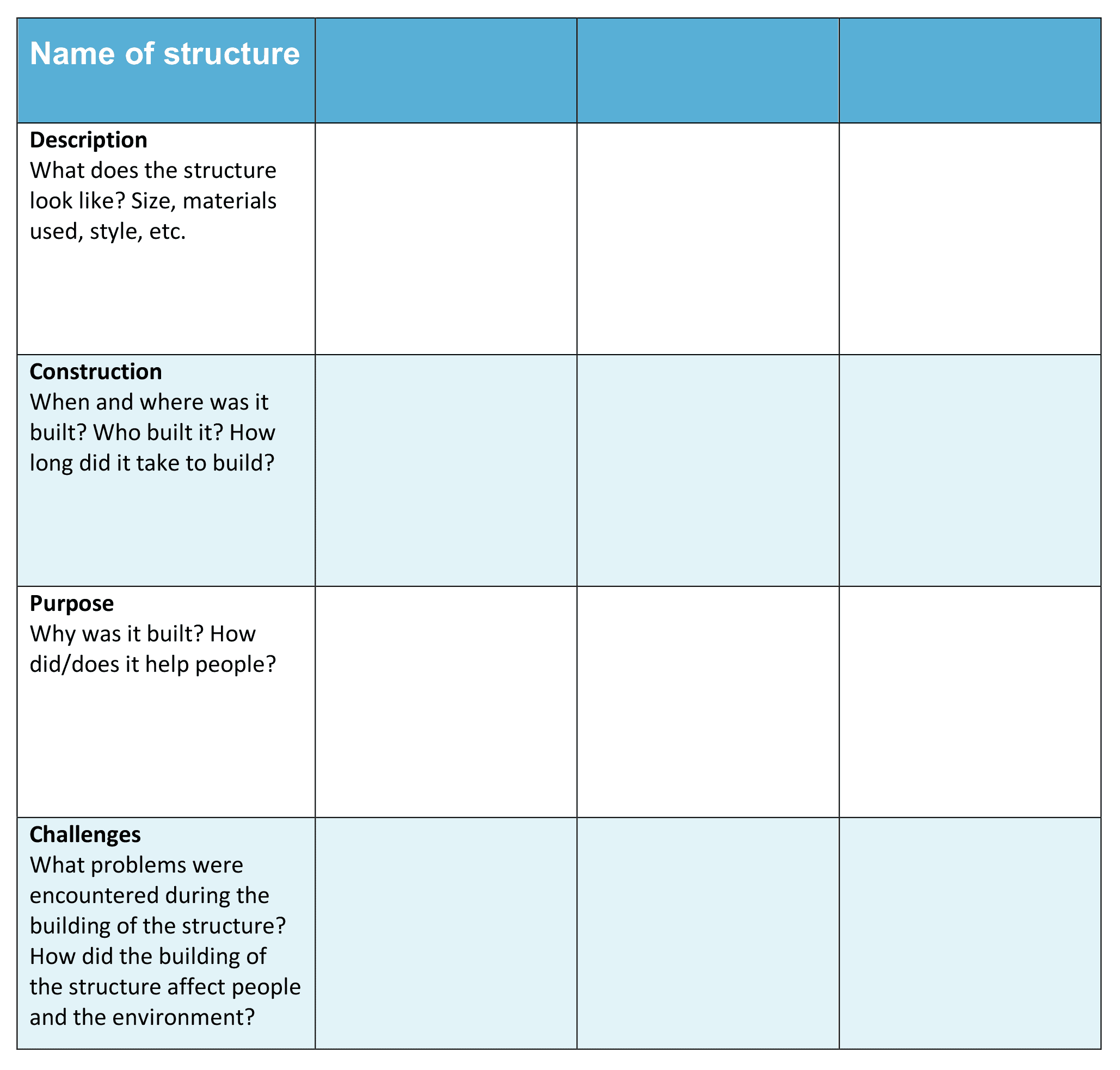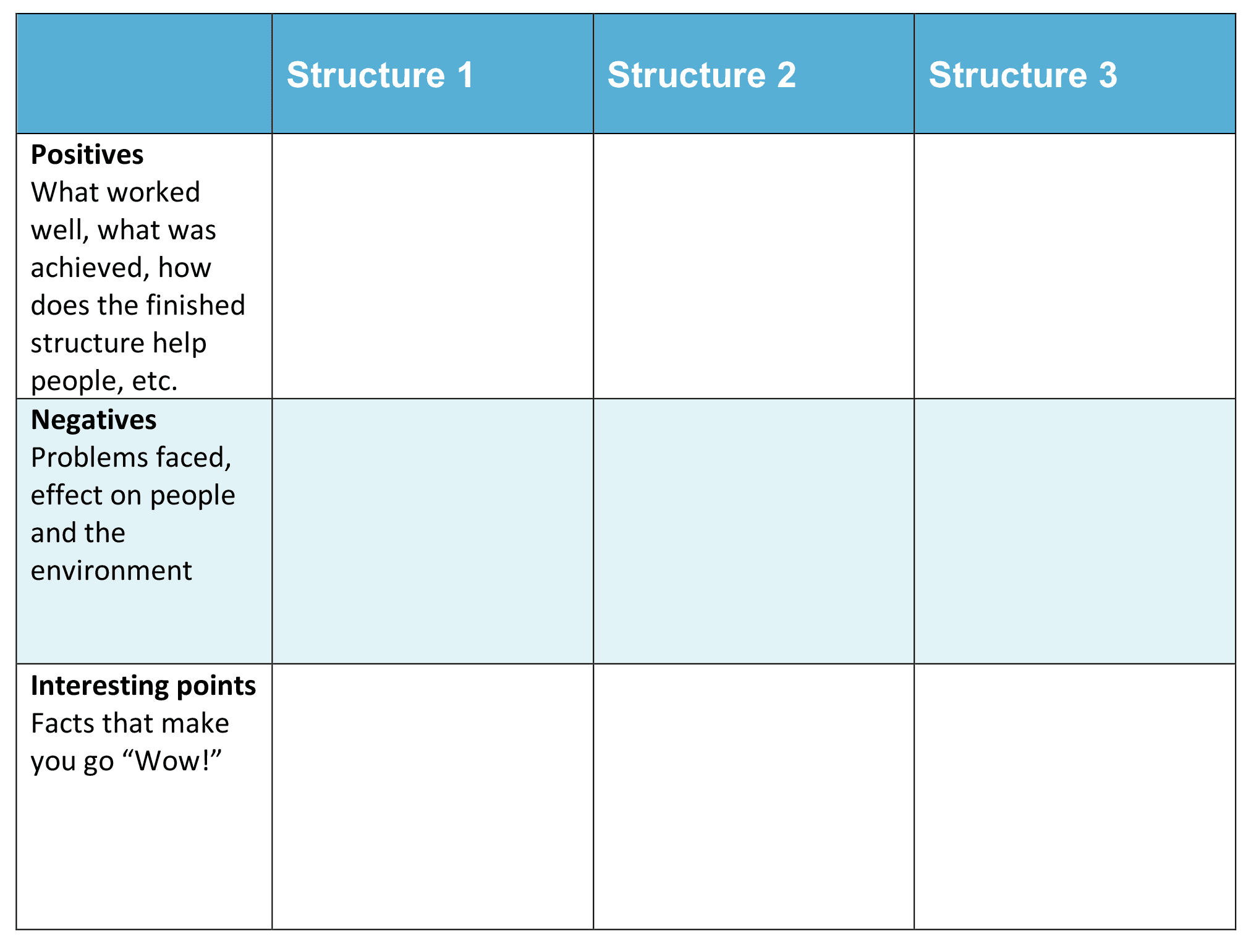Information for Teachers
Curriculum links
This investigation is linked to the following Grade 4 Next Generation Science Standards.
ETS1.A: Defining and Delimiting Engineering Problems
Possible solutions to a problem are limited by available materials and resources (constraints). The success of a designed solution is determined by considering the desired features of a solution (criteria). Different proposals for solutions can be compared on the basis of how well each one meets the specified criteria for success or how well each take the constraints into account. (3-5-ETS1-1)
ETS1.B: Developing Possible Solutions
Research on a problem should be carried out before beginning to design a solution. Testing a solution involves investigating how well it performs under a range of likely conditions. (3-5-ETS1-1)
ETS1.C: Optimizing the Design Solution
Different solutions need to be tested in order to determine which of them best solves the problem, given the criteria and the constraints. (3-5-ETS1-3)
How to search the internet
1 Keep your request short
Fewer words will give a more accurate search.
2 Choose exactly what you want
For example: Arctic Circle Climate
3 Use quotes
Double quotes around a set of words tell the search engine to consider those exact words in that exact order without any change. For example: “Arctic Circle Climate”
4 Use the plus sign (+)
If you add a plus sign (+) between words, the internet will search for all the words. For example: migrate+birds+whales+mammal
5 Use the minus sign (–) to say what you don’t want
Use a minus sign (–) to show words you do not want to appear in your results. For example: if you search for burrowing animals and do not want mammals in your search, –mammals will exclude mammals. Note that you need to put a space before the minus sign for the word to be excluded.
6 Be very clear about what you don’t want
Part 1
Ask questions and define problems
After reading Solving Problems: Dams, Bridges, and Canals you are probably amazed at how these structures are built, and you might have many questions about the topic.
List your questions
- Compare your list with questions that others have.
- Choose a question you would like to investigate.
- You can work alone, with a partner, or in a small group.
You may want to choose one or more of these questions to investigate
Q1. What other amazing dams, bridges, and canals have been built?
Q2. How has the construction of these types of structures changed over time?
Q3. What problems have designers and builders had to overcome to create amazing dams, bridges, and canals?
Q4. How does the building of these structures help people? What problems might they cause?
Go to Part 2 Investigate →Part 2
Investigate
Helpful websites
You may want use websites to help you’re your investigations.
You can find out about amazing structures by using search words, e.g. building+amazing+structures+bridges (canals, dams) and about specific projects using searches like this: The+building+of+the+golden+gate+bridge
Go to Part 3 Record data →Part 3
Record data
Find a way of recording your information that will allow you to see any patterns in the data.
Data Chart for building amazing structures
(Download and change to suit your information)
 Download Chart
Download Chart
Go to Part 4 Organize, analyze, and interpret data →
Part 4
Organize, analyze, and interpret data
1. Look over the information you have gathered and the patterns you have found.
What similarities and differences are there between the structures you investigated?
What worked well during the building of the structure? What was difficult?
2. Search for other patterns.
Do the overall positive outcomes of the finished structures make up for any negative issues faced during construction?
3. Make notes about what you find.
Go to Part 5 Present and share →Part 5
Present and share
Look over all of the information that you have gathered in your investigation.
What are the most important ideas about building amazing structures such as dams, bridges, and canals?
Make a chart showing the most important ideas.
 Download Chart
Download Chart
← Return to menu